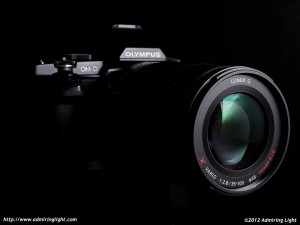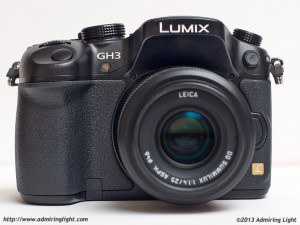Micro Four-Thirds
Note: links on gear will bring you to the Admiring Light review for that equipment.
Micro 4/3 has been around the longest of the mirrorless system cameras, and the two main manufacturers, Panasonic and Olympus, have continued to churn out more and more cameras and lenses for the system. While many of these releases have been rehashes of earlier consumer grade items, the past two years has really seen a huge push towards the high-end of the market.

In the past year, Panasonic has released the first two pro-grade zoom lenses for the Micro 4/3 system, in the Panasonic Lumix 12-35mm f/2.8 OIS and the 35-100mm f/2.8 OIS. Both lenses are weathersealed, have optical image stabilization, a constant f/2.8 aperture and great optics. The 35-100mm f/2.8 has become my absolute favorite lens for Micro 4/3. In fact, looking through my images in 2013, I’ve used that lens for nearly 62% of all photos I’ve taken with Micro 4/3 cameras so far this year. These two constant aperture zoom lenses join the Panasonic 7-14mm f/4 ultra-wide angle zoom to make for a three zoom collection that is of extremely high image quality and still compact size.
Olympus, on the other hand, has been concentrating on expanding its excellent array of prime lenses. The past year has seen the introduction of perhaps the two strongest performing lenses in the entire system, the Olympus 75mm f/1.8 and the Olympus 60mm f/2.8 Macro. Both lenses are exceptionally sharp with gorgeous bokeh. The 75mm f/1.8 has an all metal build and is probably the sharpest lens on any format I’ve ever owned. The 60mm macro is very nearly as sharp as the 75mm, but features 1:1 magnification and a pretty reasonable cost. Olympus then added the new 17mm f/1.8 to the arsenal later in the year.

Over the next year, the two big players will sort of swap roles, with Olympus slated to potentially release some fast pro grade zooms, and Panasonic slated to release high-end primes with a 42.5mm f/1.2 and a 150mm f/2.8. The only remaining gap in the Micro 4/3 lens lineup is top tier long glass. The 150mm f/2.8 will fill some of that gap, but a 200mm f/2.8 or 300mm f/4 is really needed to fully flesh out the system. Still, the lens lineup of Micro 4/3 is by far the most complete of all the mirrorless systems. Zooms from 7mm to 300mm are available, many high end primes from 8mm fisheye to 75mm telephoto, including great lenses at every major focal length in that range.
Third party makers have also heavily invested in the system, with Voigtländer creating high end manual focus lenses with super-fast f/0.95 apertures. They’ve created a 17.5mm f/0.95, a 25mm f/0.95 and now a 42.5mm f/0.95. Sigma has come out with a few lenses for both Micro 4/3 and Sony NEX and even Tamron is starting to get into the game. Expect lots of great things from these manufacturers over the next year.
Cameras
Both Panasonic and Olympus released a host of new cameras. Panasonic has released the G5 and G6, with a host of more consumer grade GF cameras, while Olympus added the E-PL5 and E-PM2. However the big guns released in the past year were the Olympus OM-D E-M5 and the Panasonic DMC-GH3. Both are new flagships for the two companies, and they’ve really elevated the Micro 4/3 format.

The Olympus OM-D E-M5 was announced a few weeks after my last article on the industry, and I speculated about the camera based on the rumors at the time. While most of the rumors were pretty accurate, I was actually happy to see that my concluding prediction came true. I said last January: “A truly excellent sensor in a responsive, fast and comfortable weathersealed body, with the size advantage and lens selection of the Micro 4/3 system could … end up being the camera that catapults Micro 4/3 into the league of professional use for a lot of people.” And the OM-D did just that. All of a sudden, I began seeing more and more advanced amateurs and professionals adding Micro 4/3 to their kits. Major photography podcasts like This Week in Photo began talking about Micro 4/3 regularly, and the body became the banner carrier for the format. Olympus put tremendous in-body stabilization, gave the camera great aesthetics, an outstanding sensor with fantastic dynamic range and a solid weathersealed construction that makes the body a truly high-end tool.
Not to be left out, Panasonic released their new Lumix GH3 last fall. Instead of going small and retro, Panasonic went chunkier and all modern, adding Wi-Fi capabilities, a similar sensor to the OM-D, amazing video capabilities and super-fast and accurate autofocus. The GH3 is also a weathersealed body and has pretty much everything but the kitchen sink.
Just this past Friday, May 10, Olympus also announced its latest Pen, the E-P5. The E-P5 is essentially an OM-D E-M5 in the Pen form factor, with a gorgeous retro-styled body and a new external viewfinder. Panasonic is rumored to be releasing the ‘ultimate’ Micro 4/3 camera this year, with rumors showing a compact body with built-in tilting EVF and in-body IS. With all these great cameras and lenses being developed, prospects for the Micro 4/3 system remain strong.






Leave a Reply